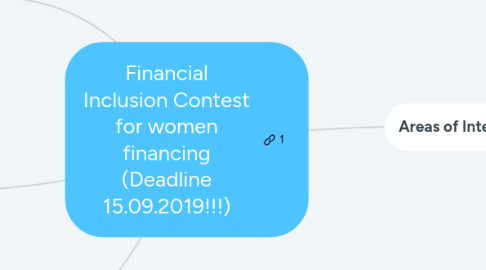
1. Funding Objectives and Criteria
1.1. By 2025, 80% of the adult population in Africa are financially included and served by a network aligned with Level One Project (L1P) principles www.leveloneproject.org. Level One Principles are key design principles for building a pro-poor payment system that is open loop, push-payment, real-time, irrevocable, governed by participants and which offers same day settlement and operates on a cost-recovery basis and a shared fraud detection and management service.
1.2. By 2025, 100% of the total addressable market (TAM) of financially excluded adults on the African continent (332 million adults of whom 60% are women) are within reach and financially included as a result of DFS enabling regulatory frameworks and a pro-poor L1P aligned DFS-related infrastructure including fully interoperable digital transaction accounts for adults.
1.3. Gender gap in financial inclusion is closed.
2. Criteria for Funding
2.1. Public sector projects should strive to be consistent with national and/or regional priorities in order to maximize the likelihood of buy-in and support from the authorities.
2.2. To the extent possible, projects should not duplicate other projects already underway through other vehicles unless a clear business case is established.
2.3. Recipients and project sponsors should be Africa-based or provide evidence of partnership with African entities and show that the proposed activities, operations and projects will be implemented in Africa.
2.4. While not an eligibility requirement, particular attention will be paid to potential projects which benefit two or more regional member countries and regions as this will strengthen regional integration and maximize the impact of ADFI resources. Due account will also be taken of the economic and social development plans of regional member countries.
2.5. Potential beneficiaries from the private sector must be legally constituted institutions that have been in existence for at least three years and are profitably run.
2.6. At the discretion of ADFI’s Governing Council and where necessary the Bank’s Board of Directors, consideration for funding may be given to new innovative solutions or specially established special purpose vehicles with a clear demonstration for scale and impact.
3. Areas of Intervention
3.1. Infrastructure
3.1.1. Digital payment systems development and upgrade (national and regional);
3.1.2. Interoperability of payment systems (national and regional);
3.1.3. Extension and interoperability of agent and merchant networks;
3.1.4. Digital identification;
3.1.5. Digital registries (for key sectors e.g. agriculture);
3.1.6. Market infrastructure e.g., credit reference bureaux and e-commerce platforms;
3.1.7. Mobile connectivity
3.2. Policy and Regulation
3.2.1. DFS diagnostics including feasibility studies, research, institutional assessments;
3.2.2. DFS strategy development;
3.2.3. Regulation review and harmonisation
3.3. Products and Innovation
3.3.1. Digital micro-products including credit, savings, insurance, pension;
3.3.2. Digitisation of agricultural value chains, transport sector, government payments including salary payments, social payments, revenue and tax collection;
3.3.3. Digital security systems
3.4. Capacity-building
3.4.1. Customer awareness creation programs
3.4.2. digital financial literacy programs
3.4.3. capacity-building for oversight authorities
3.4.4. commercial institutions
3.4.5. etc
4. Required sections
4.1. Intervention pillar of focus;
4.2. Organisation’s profile, including mission and vision;
4.3. Organisation’s track record, particularly in the field of DFS, and the selected pillar of intervention;
4.4. The problem being addressed, presented with as much detail as possible on the current status, including ongoing or anticipated interventions by other digital financial ecosystem players;
4.5. The proposed solution
4.5.1. estimated project duration;
4.5.2. project scope (i.e., national or regional);
4.5.3. end-to-end project design;
4.5.4. estimated project cost;
4.5.5. proposed project financing structure (i.e., grant, debt or grant and debt) as well as owners contribution
4.5.6. anticipated impact of the project and its scalability;
4.5.7. key performance indicators (KPI’s) for results measurement which should include expected number of beneficiaries and provision of gender- disaggregated baseline data to facilitate impact analysis.
